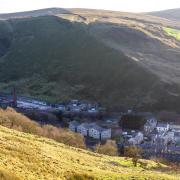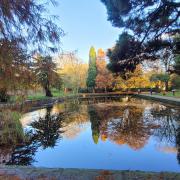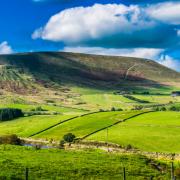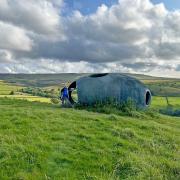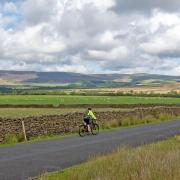Keith Carter leads a walk around the beautiful, but largely undiscovered Rusland Valley
Whenever the Lake District comes up in conversation you will hear it said that the area is so crowded nowadays that you can hardly get one more car into the popular places such as Hawkshead, Langdale and Coniston on summer weekends and in the school holidays.
The fells are swarming with the woolly-hat brigade, the lay-bys strewn with litter and every campsite and car park full to bursting. I have heard it mooted that soon they will have to issue permits, booked in advance, before you can be allowed access to popular routes like the Fairfield Horseshoe and Sty Head.
But if you know where to go and what to avoid, you can find remote places even on bank holidays. Once walkers have got the well-trodden paths under their belt there is no need to revisit them, turning rather to the less well-known locations where you are less likely to encounter the peak-baggers and the list-tickers intent on ‘doing the Wainwrights’, an endeavour which would have appalled the blessed AW.
Lakeland has no shortage of secret places known only to a few where you will meet nobody else for miles and those are the places I like to seek out. The Furness Fells are a perfect example of undiscovered hill country, although of course they are not undiscovered to the folk lucky enough to live there in the scattered hamlets and farmsteads.
Cut by the valleys of the rivers Crake, Rusland and Leven (they sound like a firm of solicitors!) these wooded hills conceal a network of old trails to delight the walker intent on exploring them.
They are not hard to get to either. From Newby Bridge take the road on the west side of Windermere and after passing Lakeside where the pleasure boats tie up take the next turning on the left signposted Finsthwaite. You pass Stott Park Bobbin Mill, open to the public between Easter and the end of September, a lovely example of what can be achieved when restoration work is sensitively handled.
The mill was built in 1835 and manufactured bobbins until it closed in 1971 and re-opened as a museum in 1983. The raw material for the bobbins was obtained by coppicing the woodland trees such as oak, ash and sycamore all growing on the nearby slopes. Besides bobbins, Stott Mill also made such useful implements as handles for tools, rope ladders for the Navy and toggles for duffle coats.
As you approach the village of Finsthwaite look for an opening on the right to High Dam car park and park there. Our walk starts from here but before setting off have a look at the wonderful diorama mounted on a bobbin-shaped plinth set up here by a local action group.
Take the path through the barrier where a notice board stands and climb the broad stony path to High Dam. Where the path divides you can take either since they come back together again. At a gate the path levels out and we reach a lesser pool sometimes referred to as Low Dam, which we keep to the right of before a short climb up to the delightful tarn known as High Dam, once the source of the motive power for the bobbin mill. Cross the dam then keep along the left hand side of the water until you come to a gap in the wall where we turn left and soon pass through a hand gate.
We then negotiate an area of open rough fell where boardwalks havebeen erected to get over the boggy parts dry-shod. The path rises and falls and after a belt of trees we emerge from the wood at a wall gap beyond which stands a signpost, pointing straight on for Crosslands.
The view across the Rusland Valley opens up to the Coniston range with the Old Man dominating and Wetherlam at the extreme right end. We descend the grassy slope in front of us noticing the deer fencing to our left. Cross Little Mire Beck and pass through two gates before entering an enclosed path that leads down to meet a lane where we turn left and walk into Crosslands, one of those secretive Furness villages I mentioned. Once past the houses we keep left at a T-junction and remain on the lane to enter Rusland Cross. Keep ahead at a junction, a signpost pointing forward to Newby Bridge and Haverthwaite.
About 250 yards beyond the last house in Rusland Cross a new signpost on the left points the way to Great Ellerside. This is the start of a recently devised right of way known as Skowbarrow Lane, a stony track climbing the hillside to the tree line then traversing the edge of the rising ground on a route that avoids a long stretch of road walking. When you see a gate on the left don’t go through it but follow the same direction as before, a sign indicating straight on for Rusland Heights and the afore-mentioned Great Ellerside.
A display board here tells the story of how bobbins were made, a labour-intensive process involving several different machines which required considerable skill to operate. It is said that it was possible to tell which machine a man operated by the type of injury visible to his hands.
Our way forward goes through a gate then alongside a moss-grown wall, the path switching to one side then the other before meeting a stile. From this point the path descends through mixed woodland from which the stocks for the bobbins were drawn. Yellow-topped posts have been installed to make the sometimes obscure way clearer. Before meeting a lane the path strikes off left and we stay with it if we wish to keep off the tarmac lane. The path does eventually meet the lane further on at the top of a brow but a stile marks the start of a further path directly to Town End.
Take the path over the stile to Town End through the woods and descend to where felled timber has been stacked to join the road at a gate. Turn left and walk through Town End to the next village, Finsthwaite noticing the fine Finsthwaite House on the right, the windows all shuttered at this time of the year. Once through the village, past the Old Vicarage the opening on the left to High Dam car park is our journey’s end.
Although High Dam attracts a fair number of visitors, the walks from the car park are worth exploring whatever the weather and I for one will be back again to enjoy the unique silence of these wonderful woods.
Compass points
Area of walk: Rusland Valley
Map: OS Explorer OL7 The English Lakes, South East.
Distance: 7 miles
Time to allow: 4 hours
Refreshments: During the hummer months there is a caf� at Stott Park Bobbin Mill. The Lakeside Hotel is only two miles away.
Further reading: The Outlying Fells of Lakeland by A. Wainwright.



